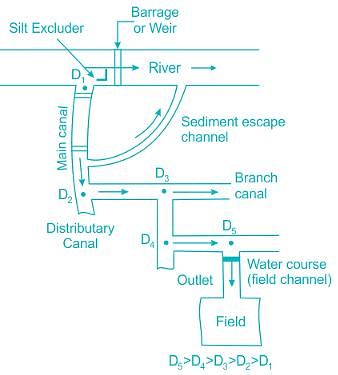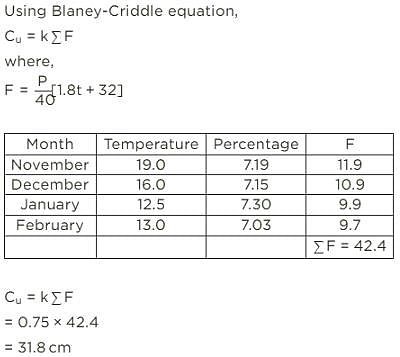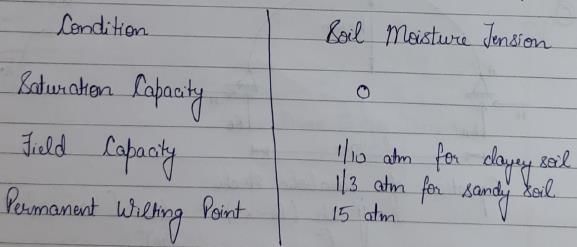Test: Irrigation Techniques & Water Requirement of Crops - 1 - Civil Engineering (CE) MCQ
10 Questions MCQ Test GATE Civil Engineering (CE) 2025 Mock Test Series - Test: Irrigation Techniques & Water Requirement of Crops - 1
With the increase in supplied irrigation water, the yield of crops
The duty of irrigation water for a given crop is maximum
| 1 Crore+ students have signed up on EduRev. Have you? Download the App |
Consumptive use of water for a crop represents
Permanent wilting point moisture content for a crop represents the
The method of irrigation adopted at places where there exists acute scarcity of irrigation water is:
The efficiency of water conveyance does not depend upon
Consider the following details of crops as given below:

If the latitude of the place is 30∘C, then consumptive use of crop
[Use Blaney-Criddle equation and crop factor, k=0.75]
Commonly adopted moisture tension, in atmosphere, of a soil at permanent wilting point is
At field capacity, water is held in most of the soils at a tension of
Irrigation frequency is a function of
|
31 docs|280 tests
|
|
31 docs|280 tests
|




















